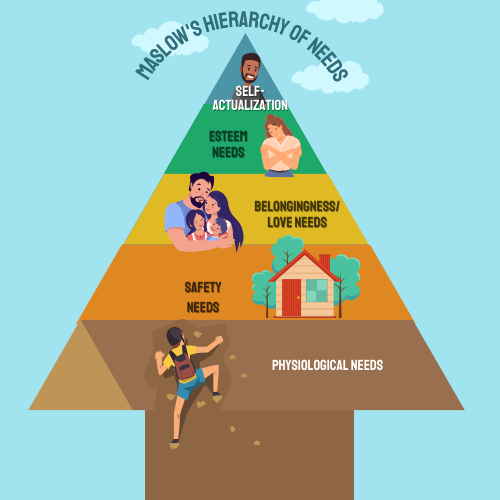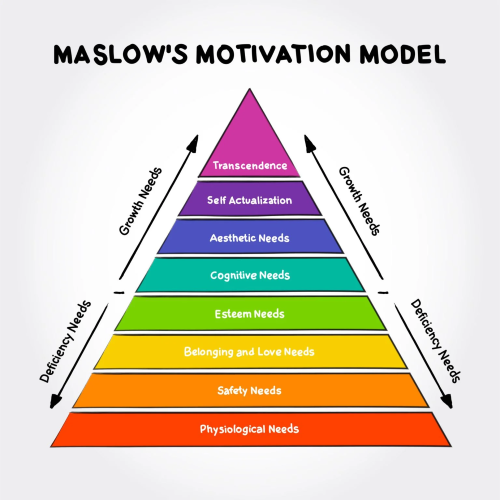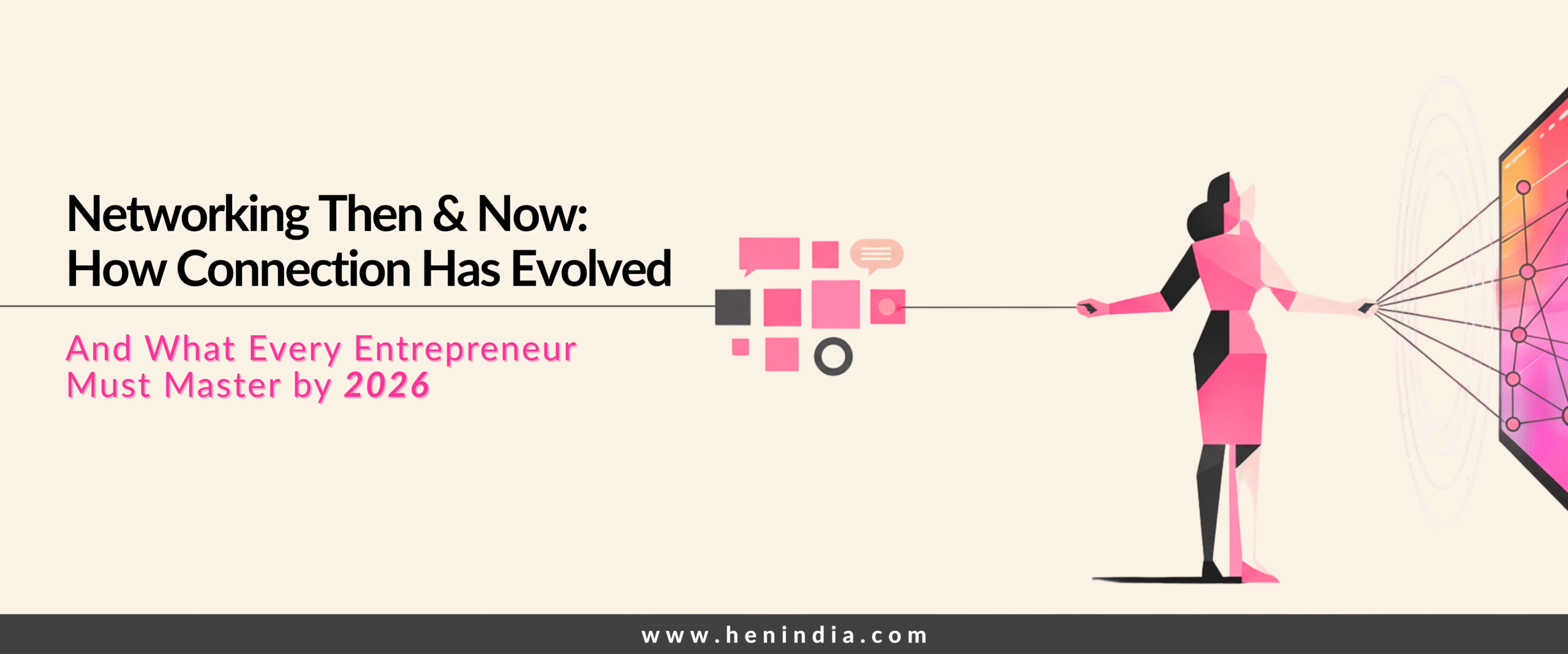Have you ever wondered why people do the things they do?
What motivates them to buy a certain product, take a particular job, or strive for something in life?
In 1943, a psychologist named Abraham Maslow came up with a theory that helps explain this.
Today we will delve deep into Maslow Hierarchy of Needs, exploring how it can be a game-changer for entrepreneurs
Learn how to create products and marketing that truly resonate with your customers.
Here’s what you’ll learn:
- The 5 Tiers of Maslow Hierarchy of Needs: What Motivates Your Customers?
- Real-World Examples: Successful brands using Maslow’s Hierarchy in action.
By gaining these valuable insights into human behavior, you’ll unlock the secrets to success, not just in business, but in all areas of life.
A Dive Into The Maslow Hierarchy of Needs
Maslow Hierarchy of Needs is a tool to understand what motivates people. It breaks down human needs into five tiers, with basic needs at the foundation and more complex needs emerging as the foundation is solidified

While innovation is important, success starts with understanding what drives your target audience.
Why is this important?
Because understanding these needs unlocks the secrets to human behavior. It’s a game-changer in various fields, including:
- Target the Right Needs: Is your product about safety, connection, or achievement? Focus on the needs that make your product irresistible.
- Craft Compelling Marketing: Speak to your customers’ deepest desires. Maslow’s Hierarchy helps you create messages that resonate and drive sales.
- Build a Better Product: See your product through your customers’ eyes.
Let’s explore the details of each tier in Maslow’s Hierarchy and see real-world examples of how it’s applied!
Tier 1: Physiological Needs: Basic Needs
People are focused on solving essential problems.
These are the essential needs for survival, the foundation of human motivation.
They come first because until these needs are met, other desires take a backseat. Imagine a hungry person – their primary focus is finding food, not making new friends.
They might need products that fulfill basic needs like food, water, shelter, or reliable transportation.
We all recognize Amul’s slogans: “Amul Doodh Pita Hai India” and “The Taste of India.”
These slogans cleverly position their products as essential and reliable sources of nourishment, tapping into the most fundamental human need: food.
Tier 2: Safety & Security
Think about the things that make you feel safe and secure. It’s not just about physical safety, but also emotional security.
Your product or service might offer features that provide peace of mind or protection.
LIC: Their slogan “Zindagi Ke Saath Bhi, Zindagi Ke Baad Bhi” (With you in life, and even after life) emphasizes financial security for your loved ones.
Dettol: Their slogans like “Be 100% Sure” , “1-2-3 Germs Se Free” (Free from germs in 1-2-3) or simply “Dettol Dettol Ho” highlight protection from illness.
Tier 3: Love and Belonging
Humans are social creatures. We crave connection with others and a sense of belonging
It’s about feeling like we’re part of something bigger than ourselves, whether it’s a family, a group of friends, a romantic relationship, or even a club or online community.
Imagine the difference between going to a concert alone or with a group of close friends – the shared experience makes it more meaningful.
Your product or service could help them connect with others or feel part of a community.
For Sure all Indians, remember this Airtel ad – “Har Ek Friend Zarorri hota hai“
It emphasizes the importance of connection and staying in touch with loved ones.
Once this need for connection is met, people can move on to the next level of Maslow’s Hierarchy: the need for esteem.
Tier 4: Self-Esteem
We all have a desire to feel good about ourselves and be respected by others. This is the need for esteem in Maslow’s Hierarchy.
It can be broken down into two parts:
- Inner Esteem: This is about feeling confident in yourself and your abilities. It’s the satisfaction you get from learning a new skill or achieving a goal. It’s about feeling good about who you are.
- Outer Esteem: This is the desire for recognition and respect from others. It might involve wanting a good reputation, status symbols, or simply feeling valued by friends and family.
Cadbury Dairy Milk: “Kuch Accha Ho Jaye, Kuch Meetha Ho Jaye” positions their chocolate as a little indulgence or reward, which can contribute to a sense of self-worth.
Raymond: The focus on “The Complete Man” aligns more with the desire for self-esteem, social recognition, and projecting a successful image, which falls under Esteem Needs.
Milk by Name, Worlds Apart: Brand Positioning Makes the Difference
While both “Cadbury Dairy Milk” and “Amul Milk” share “milk” in their names, their brand positioning creates a clear distinction.
Cadbury positions itself as a chocolate brand, offering a sweet treat or indulgence.
Amul, on the other hand, positions itself as a dairy brand, focusing on essential products like milk.
This clear difference shows the power of good brand positioning and marketing.
By understanding customer needs and crafting a targeted message, brands can create a strong identity and resonate with their ideal audience.
Tier 5: Self-Actualization
The final level of Maslow’s Hierarchy is all about reaching your full potential and feeling truly fulfilled.
This isn’t about achieving a perfect life, but rather a constant journey of growth and becoming the best version of yourself.
They are drawn to experiences or products that allow them to express themselves creatively or make a positive impact.
Nike’s iconic slogan, “Just Do It,” perfectly embodies the spirit of self-actualization.
It’s a call to action, encouraging individuals to push their limits, overcome challenges, and relentlessly pursue their potential. This message resonates deeply with those on the journey of self-discovery.
Remember, you too are on this journey!
Self-Actualization isn’t just for your customers; it’s a powerful motivator for you as well.
Building a business that aligns with your own passions and purpose can fuel your own journey of self-discovery and fulfillment.
By understanding and catering to the desire for Self-Actualization, you can create a brand that resonates deeply with your customers and fuels your own entrepreneurial journey.
Everyone has their own unique path to feeling fulfilled.
Maslow didn’t think everyone reaches “perfect” self-actualization, but we can all have those amazing moments (peak experiences) where we feel truly alive and on top of our game.
Related Post
Maslow Didn't Stop at Five: Exploring the Expanded Needs

Here’s what he added:
- Cognitive Needs: These aren’t just “wants.” We all have a natural urge to learn, explore, and understand the world around us.
- Aesthetic Needs: Life isn’t just about function; it’s about beauty too! Maslow saw value in appreciating beauty everywhere (art, music, nature, design).
- Transcendence Needs: We seek connection beyond ourselves – spiritual, purpose-driven, or a feeling of oneness.
Indian Brands Addressing Higher Needs in Maslow's Hierarchy
Cognitive Needs:
- Byju’s/Vedantu (Online learning platforms)
- “Think Different. Learn Better” and “The joy of learning“
- These platforms move beyond rote memorization. Their focus on sparking curiosity and igniting a love for learning directly addresses cognitive needs for knowledge, exploration, and discovery.
Aesthetic Needs:
- Fabindia (Clothing and homeware)
- “Celebrate India” (previous), “Serving India” (current)
- Fabindia clearly caters to the Aesthetic Needs of Maslow’s hierarchy. Their focus on handcrafted Indian products resonates with a desire for beauty, order, and a connection to cultural heritage.
Transcendence Needs:
- Isha Foundation
- “Inner Engineering. Outer Transformation.“
- The tagline perfectly captures their approach to transcendence.
- Their programs aim to transform individuals from within, fostering a sense of meaning, purpose, and connection to a higher power or reality. This focus addresses the deepest human needs that lie beyond the physical world.
Brands might target multiple needs simultaneously.
For instance, Fabindia’s focus on traditional designs can also connect with a sense of cultural belonging (Love and Belonging Needs).
By understanding these higher needs, brands can create products and marketing messages that resonate with consumers on a deeper level, fostering brand loyalty and a sense of connection beyond just fulfilling basic needs.
- Deficiency Needs (D-Needs): The foundation. These are your survival needs – food, water, safety, security. You’re driven to meet these needs when they’re lacking.
- Growth or Being Needs (B-Needs): All about becoming your best self. These are about love, self-esteem, creativity, and reaching your full potential. They come from a desire to grow, not just survive.
Understanding Human Motivation with Maslow
Therefore, Maslow’s Hierarchy is a powerful tool for entrepreneurs to see the world through your customers’ eyes and understand what motivates them.
- People are driven by a complex mix of needs at different stages of their lives.
- Your product or service can play a role in fulfilling those needs across the entire hierarchy.
For example, someone might crave respect (esteem) more than love, or be so passionate about their art (self-actualization) they’d sacrifice comfort to pursue it. Our actions are often driven by a mix of needs, like working for financial security (safety) while also wanting recognition (esteem) from colleagues.
By understanding where your target audience falls within this framework, you can tailor your offerings and messaging to resonate with their most pressing needs.
Maslow hierarchy of needs is flexible.
People might have multiple needs at once, and the order can change. What matters most is understanding the underlying motivations that drive your customers. By understanding your customers better, you can create products and marketing they love!
Article Contribution by – Devika Kovachi & Sapna Garg










